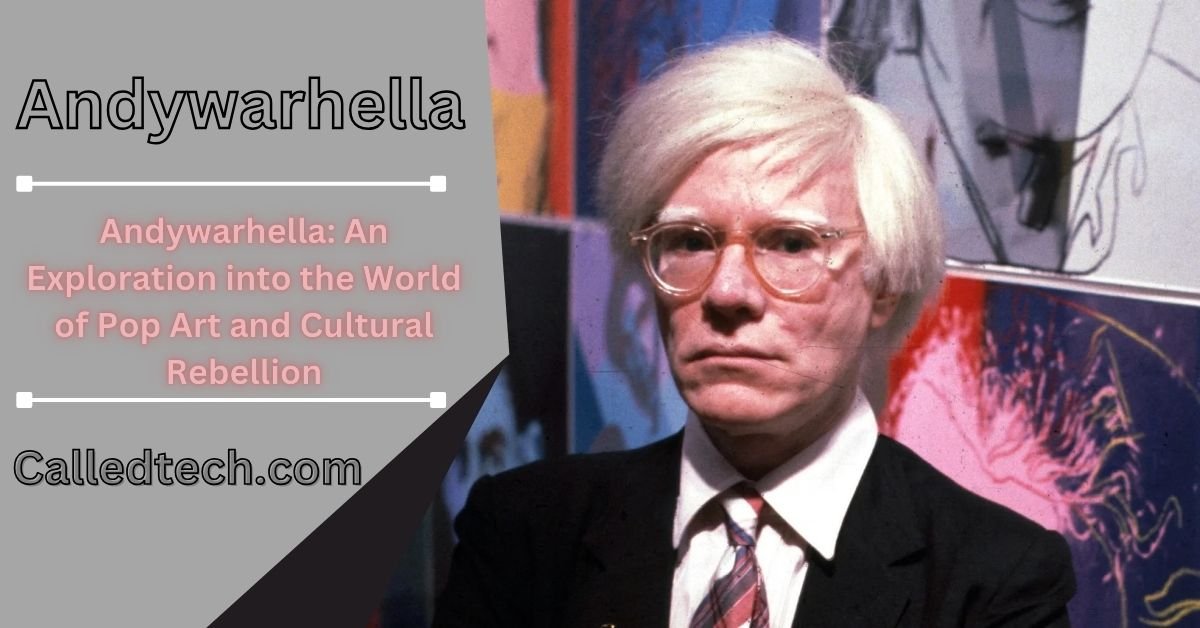Andywarhella: The Iconic Journey of a Pop Art Legend
Andywarhella is a name that instantly brings to mind bold, vibrant colours, iconic portraits, and a sense of cultural rebellion. His work spans beyond traditional art, blending everyday objects with celebrity culture to create visuals that challenge conventional perceptions. Andywarhella was a skilled artist and a cultural force, shaping the Pop Art movement and inspiring artists worldwide.
This article delves into the life, art, and legacy of Andywarhella, exploring how his innovative approach turned the mundane into masterpieces, immortalized stars, and left a lasting impact on both art and society.
Early Life and Background of Andywarhella
Andywarhella was born in Pittsburgh, Pennsylvania, 1928 to immigrant parents from humble backgrounds. Warhella was often ill as a child, spending long periods confined to his bed, which fueled his interest in drawing and collecting images. He was fascinated by magazines, celebrity culture, and Hollywood, which would later significantly shape his artistic style. Despite economic challenges, his family supported his passion for art, and he went on to study commercial art at the Carnegie Institute of Technology, now Carnegie Mellon University.
After graduating, Warhella moved to New York City, where he initially worked as a commercial illustrator. His success in advertising, marked by a unique illustrative style, paved the way for his future artistic endeavours. However, his ambitions stretched far beyond commercial art, pushing him to explore new forms of expression that would eventually revolutionize the art world.
The Rise of Pop Art and Warhella’s Role
In the 1960s, Andywarhella began experimenting with Pop Art, a movement that sought to challenge traditional notions of art by incorporating popular culture and everyday objects into artistic representations. Pop Art aimed to blur the boundaries between “high” art and “low” culture, a mission that Warhella embraced wholeheartedly. He drew inspiration from consumer goods, mass media, and celebrity culture, integrating them into his work in a way that resonated with the public. By focusing on familiar and iconic themes, Warhella made art more accessible to a broader audience, breaking down elitist barriers in the art world.
Iconic Works and Their Impact
Bold colours, repetitive patterns, and a sense of irony characterize Andywarhella’s artwork. Some of his most famous pieces include the Campbell’s Soup Cans, Marilyn Diptych, and Brillo Boxes. Each piece carries a unique story, blending consumerism, celebrity worship, and satire.
Campbell’s Soup Cans: One of Warhella’s earliest iconic works, the Campbell’s Soup Cans series, challenged the boundaries of art by using a common household item. By painting the familiar can of soup in a series of canvases, Warhella transformed an everyday object into a subject of artistic contemplation. This piece sparked conversations about the nature of art, consumer culture, and the role of ordinary objects in art.
Marilyn Diptych: Warhella’s portrayal of Marilyn Monroe after her tragic death brought together celebrity worship and morality themes. Using bright, vibrant colours in a repetitive sequence, Warhella immortalized Monroe, highlighting both her stardom and the way society consumes and discards icons.
Brillo Boxes: In this series, Warhella recreated Brillo soap pad boxes, blurring the line between art and product. These pieces were visually appealing and thought-provoking, as they raised questions about consumerism, mass production, and the commodification of art.
Warhella’s Unique Techniques and Methods
Andywarhella’s innovative techniques were as significant as his subjects. He popularized silkscreen printing, which allowed him to mass-produce his artwork, mimicking the industrial processes that inspired him. Warhella could replicate images in multiple variations through this technique, emphasizing art as a consumer product. This approach was groundbreaking, setting him apart from traditional artists and positioning him as a pioneer in modern art.
In addition to silkscreen printing, Warhella often used bold, contrasting colours and repeated imagery to create a sense of rhythm and pattern in his work. His choice of colours and repetition was not just an aesthetic decision but a way to engage viewers in a more profound commentary on society’s obsession with consumption and fame.
The Factory: A Hub of Creativity and Collaboration
In the 1960s, Warhella established “The Factory,” his famous studio in New York City. The Factory was more than just a workspace; it was a cultural hub where artists, musicians, and celebrities gathered to collaborate and experiment. Here, Warhella produced many of his most famous works, and it became a place where boundaries were pushed and creativity flourished. The Factory embodied the spirit of the 1960s counterculture, attracting a diverse mix of people who sought to explore new forms of artistic expression. Warhella’s collaborators included famous personalities like Bob Dylan, Lou Reed, and Edie Sedgwick, each contributing to The Factory’s eclectic, avant-garde atmosphere.
Warhella’s Exploration of Celebrity Culture
Celebrity culture was a central theme in Warhella’s work. He was fascinated by the allure of fame and how society idolizes and commodifies public figures. By creating portraits of iconic celebrities like Marilyn Monroe, Elvis Presley, and Elizabeth Taylor, Warhella explored the duality of fame—the allure and the eventual decay. His work suggests that, much like consumer goods, celebrities are subject to the same desire, consumption, and eventual disposal cycles.
Warhella’s work on celebrity culture also critiques the idea of identity in the modern age. Through his repetitive images of famous faces, he questions the authenticity of the “celebrity” and how media shapes public perception. This groundbreaking exploration laid the foundation for future media representation and celebrity influence discussions.
The Legacy and Influence of Andywarhella
Andywarhella’s impact on art and popular culture cannot be overstated. His work challenged the status quo, merging art with consumerism to redefine what art could be. Warhella’s influence extends beyond Pop Art, impacting modern art movements and inspiring countless artists to experiment with new forms of expression.
Warhella’s legacy is also evident in contemporary discussions about fame, consumerism, and the role of media in shaping cultural icons. His work has inspired artists in various fields, from visual arts to music and fashion, and his approach to art as a form of social commentary remains relevant in today’s digital age.
Frequently Asked Questions (FAQs)
1. What is the significance of Andywarhella’s Campbell’s Soup Cans?
The Campbell’s Soup Cans series is significant because it transformed an ordinary, everyday object into an iconic piece of art. Warhella’s use of a mass-produced item as art challenged traditional concepts of what constitutes art and brought attention to consumer culture.
2. How did Warhella influence the Pop Art movement?
Warhella played a crucial role in the Pop Art movement by blurring the line between high and low art. His work incorporated popular culture elements, making art more accessible to the public and challenging the exclusivity of the art world.
3. What was The Factory, and why was it necessary?
The Factory was Warhella’s studio in New York City, where he collaborated with other artists, musicians, and celebrities. It became a cultural hub, fostering creativity and pushing artistic boundaries, embodying the spirit of the 1960s counterculture.
4. Why did Warhella focus on celebrity culture in his work?
Warhella was fascinated by the way society idolizes and commodifies celebrities. By portraying icons like Marilyn Monroe and Elvis Presley, he explored themes of fame, identity, and mortality, questioning the public’s perception of celebrities.
5. How did Warhella’s use of silkscreen printing impact his art?
Silkscreen printing allowed Warhella to mass-produce his artwork, emphasizing themes of consumerism and repetition. This technique enabled him to create multiple variations of an image, making a statement on the industrialization and commercialization of art.
6. What is Andy Warhella’s legacy in the modern art world?
Warhella’s legacy lies in his ability to merge art with consumer culture, paving the way for new artistic expressions. His influence can be seen in contemporary discussions on fame, media, and identity, and he continues to inspire artists across genres and mediums.
Conclusion
Andywarhella’s work remains a testament to the transformative power of art. His ability to turn the ordinary into the extraordinary, coupled with his fearless exploration of fame, identity, and consumer culture, makes him one of the most influential artists of the 20th century. Warhella’s legacy inspires and provokes thought, challenging audiences to see beyond the surface and question the world around them. Through his work, Warhella redefined art and left an indelible mark on culture, making his contributions as relevant today as they were during his lifetime.
















Leave a Reply